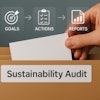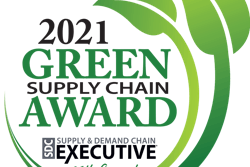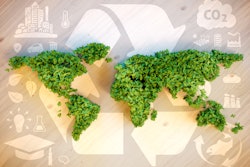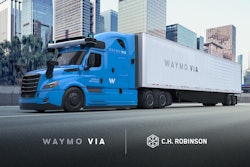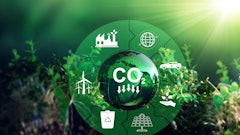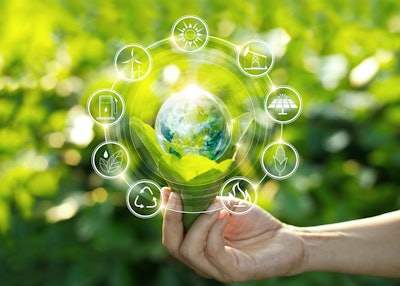
Over the last two years, the global drive to decarbonize business operations in response to pressure from consumers, policy makers and investors has accelerated. According to New Climate Institute’s Global Climate Action report, over 800 companies, operating within 10 of the world’s major emitting economies, have already made quantifiable post-2020 absolute emissions reduction targets. Nearly 40%, or more than 330 companies, are in the Fortune Global 500 and Global Forbes 2000 lists.
But, something is missing from many of these corporate goals -- any accounting of significant emissions from their supply chains or waste from their products. As it turns out, supply chain emissions account for 80-90% overall contributions to greenhouse gases. In fact, eight global supply chains account for more than 50% of all global greenhouse gas emissions today. In a database of corporate climate disclosures, 1,858 companies out of 2,000 have either pledged or committed to become net zero. But, only 210 of those companies reported emissions from supply chains or consumer waste.
In the jargon of the Greenhouse Gas (GHG) Protocol, which establishes comprehensive global standardized frameworks to measure and manage GHG emissions, an organization’s supply chain emissions fall under the “Scope 3” category, which includes indirect upstream and downstream emissions. The practical reason that many organizations have ignored Scope 3 emissions in their environmental targeting and reporting exercises is that it is often very difficult to get an accurate accounting of upstream supply chain emissions.
Given the recent success that companies have had measuring and reducing their direct emissions—known as Scope 1 emissions—and emissions from purchased energy—known as Scope 2 emissions—organizations are now turning their attention to their supply chains for answers on how to further reduce carbon emissions to achieve ambitious targets. But, there are significant challenges ahead before organizations can squeeze potential GHG reductions out of their supply chains.
One challenge is data transparency and availability. Second- and third-tier suppliers often present the greatest challenge here because many haven’t measured their GHG emissions and have limited infrastructure in place to do so. When organizations ask these suppliers to provide an accurate picture of their Scope 1 and Scope 2 emissions, they simply do not know the answer. Processes and data standards need to be established to enable these suppliers to start their sustainability journey by measuring their GHG emissions footprint. Developing GHG collection, computation and sharing standards is not a straightforward task—particularly in competitive industries where market participants tend to hold their data close to their vests. Here, industry alliances need to be built to enable GHG data standardization and cooperation over extended periods of time.
Getting accurate data is just the beginning. Organizations still need to determine how to act on it in order to influence the environmental footprint of their suppliers. These efforts occur within the context of an organizations strategic sourcing process. This process looks at the entire supply cycle within an organization with the aim of optimization. The goals of strategic procurement are managing supplier relationships, ensuring quality, minimizing costs and reducing risks within the cycle. Meeting environmental objectives has historically not been on the procurement agenda. This means that new procurement processes and strategies need to be developed to evaluate suppliers in a new light. This may be difficult in today’s environment when supply chain reliability is the top issue.
Once an expanded supplier evaluation framework is in place to evaluate suppliers on cost, quality and environmental footprint, organizations need a clear strategy for making supplier tradeoffs considering the expanded set of information. How much is it worth to shift to new suppliers who offer a lower carbon footprint but may be more costly or have quality issues? These are challenging questions when the imperative of most businesses is to minimize costs and ensure maximum quality.
Achieving the right balance between legacy suppliers with strong relationships and new suppliers with lower carbon footprints is tricky. Many existing suppliers are making efforts to decarbonize; others desire to move in a more sustainable direction, but do not have the resources to do so. Recent research from HSBC and Boston Consulting Group highlighted that small- and medium-sized businesses don’t have the in-house climate expertise and have limited access to capital to drive and fund climate transformation.
To be successful here, corporations should supplement new standards with efforts to co-invest and provide liquidity through supply chain finance, share transition knowledge and resources and help propagate innovation and technologies. Some organizations are taking the lead to help transform their supply chains.
Despite these significant hurdles, recent research indicates that the juice is worth the squeeze. Studies show that 30-40% of supply chain emissions can be reduced at $10-$15 per ton of carbon dioxide. The bottom line is that entire industries are going to have to embark upon a journey to create supply chain data transparency, build platforms and strategies that enable action and create frameworks and tools that empower suppliers to overcome resource and capability limits on the road to decarbonization. Nonetheless, expect efforts to leverage supply chains to meet environmental goals to continue. Indeed, the only thing larger than the difficulty of addressing these supply chain decarbonization challenges is the risk of inaction in the face of the growing threat of climate change.


